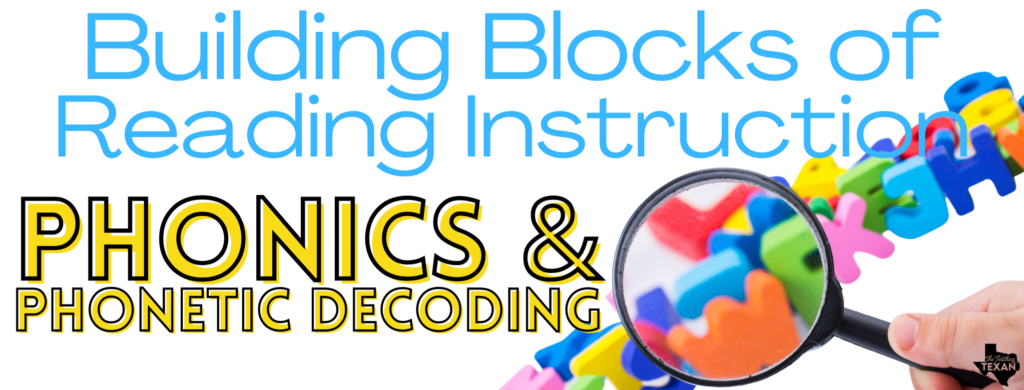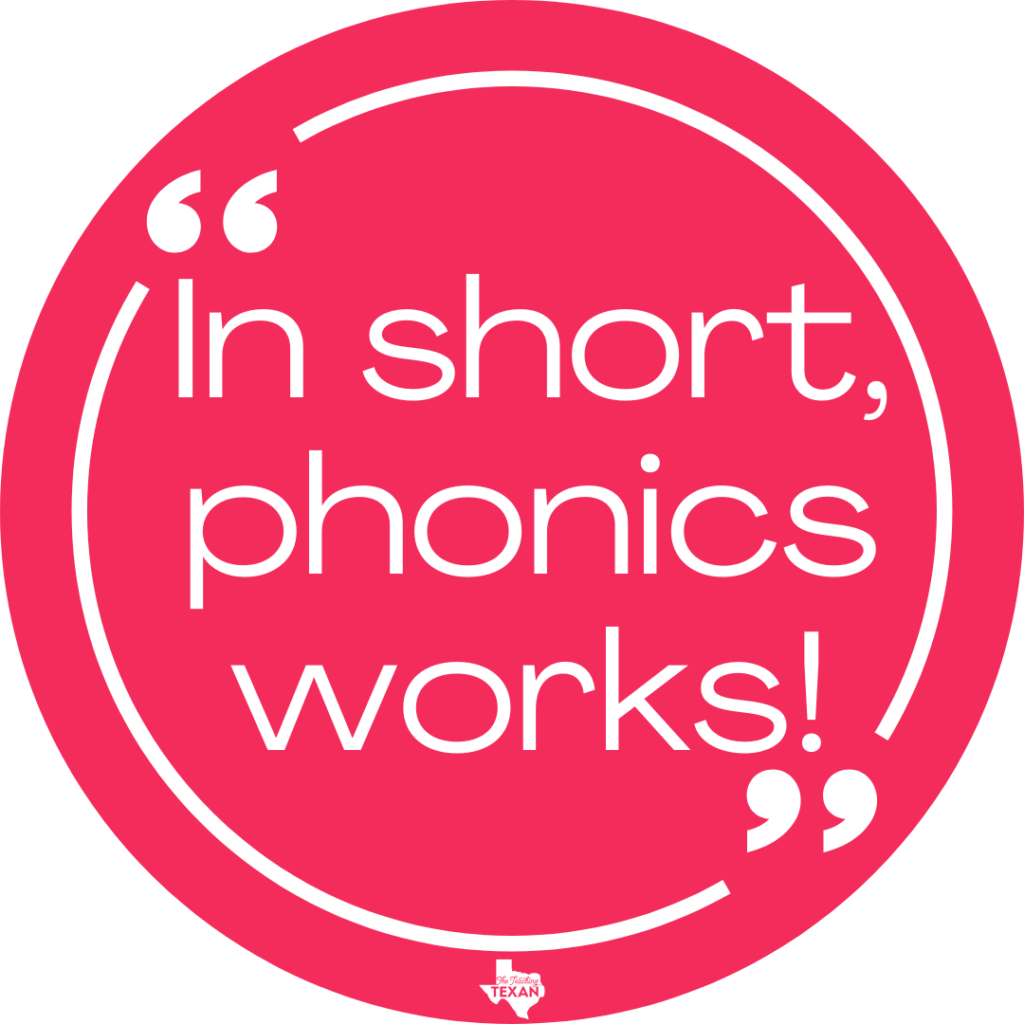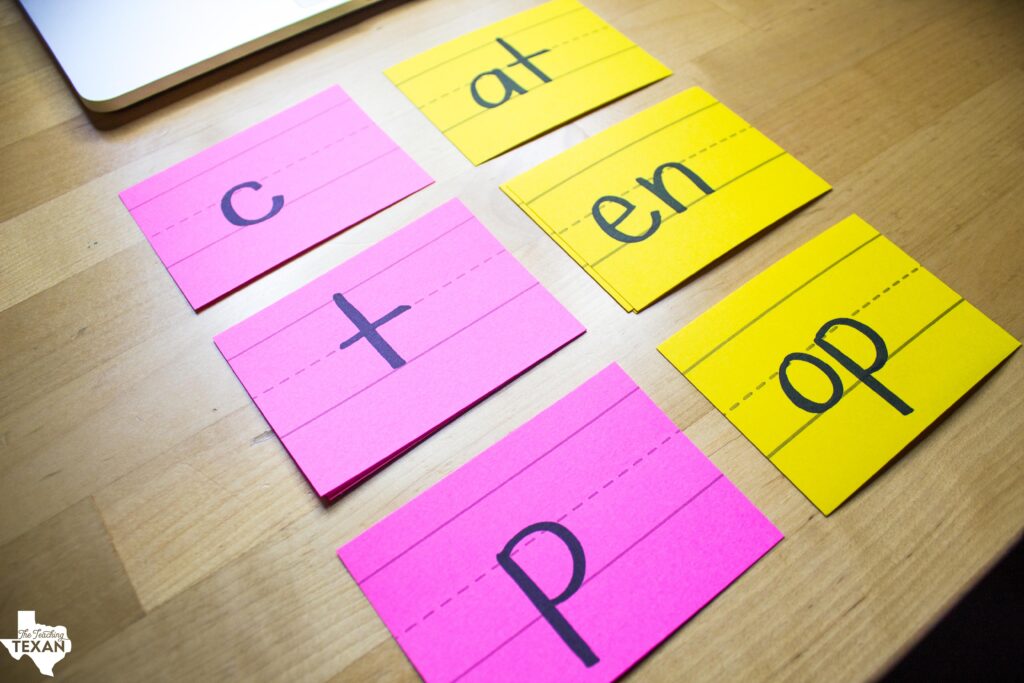Building Blocks of Reading: Phonics and Phonetic Decoding
For the love of LITERACY. Happy Valentine’s Day everyone! What better way to celebrate than learning about phonics? But really, after you enjoy champagne with your honey (or your kitty – no judgement here!), we’ll be back in the classroom prepping kiddos to conquer reading with ease.
We’ve spent the past few weeks exploring the essential building blocks of reading. To review, students begin their journey to reading fluency by listening, mastering rhyming and alliteration, learning to identify and write letters, and then by understanding sentences, syllables, onset and rime. Getting students to the place where they’re ready to systematically learn phonics and phonetic decoding is no easy task — they’ve come a long way by the time they’re prepared to take on this challenge. So first of all, congratulations!

Now, let’s jump in. We apply phonics when students begin to sound words out in order to read and write. They must have the prerequisite letter knowledge and blending practice in order to be successful. Phonics is a visual and written skill, unlike phonemic awareness, which is mostly oral as we’ve discussed. But, as Wiley Blevins points out in this Scholastic post, they are related:
“Phonics involves the relationship between sounds and written symbols, whereas phonemic awareness involves sounds in spoken words. Therefore, phonics instruction focuses on teaching sound-spelling relationships and is associated with print. Most phonemic awareness tasks are oral.”
Wiley Blevins, Scholastic
Before we dive into specifics about teaching phonics, I want to acknowledge that the incorporation of phonics is still a bit of a debate in the world of education. However, there is a TON of research to back the teaching of a systematic approach to letter sounds and letter combinations. I, and many other scholars, believe it to be unequivocally one of the most important tools children need when acquiring reading and writing skills.
Research Says…
This question of efficacy has been analyzed and addressed on the national level. In fact, “the National Reading Panel (NRP) assembled available research from 1970 to 2000 to investigate whether systematic phonics instruction helps children learn to read alphabetic writing systems more effectively than either unsystematic phonics or instruction teaching no phonics. The case for the value of systematic, explicit phonics instruction was quite compelling” (Brady, 2011). And in independent studies, phonics “intervention brought about a statistically significant improvement in the students’ decoding and word reading skills” (Jeffes, 2015). Additionally, Liben and Liben make an extremely compelling (and in my opinion, definitive) case for systematic phonics in chapter 4 of their book, Know Better, Do Better. If you’re interested in a bit more homework, I highly recommend reading that book from cover to cover.
Unlike the Whole Language theory of reading (an alternate theory of language acquisition), Liben and Liben argue that Systematic Phonics help students move away from guessing words based on pictures or context clues to actually being able to decode words as they encounter them by understanding the relationships letters have.
While there is a time and a place for leveled readers and decodable books, for the purpose of discussing phonics, decodables are your winner. Decodables are written to include specific phonics patterns and you can tailor these to what you have been practicing with the students whole group. BINGO! You are now giving authentic practice to the skills you just taught! Here’s a look at what a decodable reader looks like:

Notice the intentional use of short a words.
When students receive a firm foundation in phonics, you can rely less heavily on leveled text because they are able to decode new words they encounter since they have been exposed to and practiced phonics patterns. That’s not to say you can’t use leveled texts, just pair them with phonics and decoding practice as well.
Scope and Sequence
In short, phonics works! But how can we teach it in the classroom? First, it’s perfectly appropriate to mix in phonemic awareness activities (coming in the next post!) with your early instruction of letter sounds. So don’t worry about “finishing” phonemic awareness before you progress to phonics. Research shows that these are just as, if not more, effective when taught side-by-side.
Also remember that the goal isn’t just to teach phonics, but systematic phonics. The National Reading Panel’s research recommends a “sequential set of phonic elements”. This is also known as a scope and sequence or, more colloquially known as “What order do we teach this in?!?!”
While Liben and Liben explore this thoroughly in Know Better, Do Better, we don’t need too many technical details to get a basic overview. And as much as I’d like to keep you here forever and nerd out about phonics until the cows come home, we don’t have time for EVERYTHING in this post today. In short, they conclude that research doesn’t point to one specific scope and sequence as better than all the rest. It’s more important to be consistent and systematic than to teach phonics and decoding in a specific order.

Add These TODAY!
You know I’d never leave you without a few easy-to-integrate, no-prep activities for your students to do right away. Here are some simple ways to introduce systematic phonics skills to your students ASAP.
- Phonemes to Phonics – a SONG. Let students know they’ll be building skills they already have mastered: rhyming, onset, and rime. A simple way to connect this in a whole group lesson is to review rhyming words you’ve been “playing with” and tell students they’ll move to writing and reading words with these sounds. You may want to invent a short transition song to make the move from phonemes to phonics fun and exciting. Liben and Liben have this suggestion, “lyrics like ‘We’re moving from phonemes to phonics’ (3 times), repeated with the final line, ‘And we do it every day!’ to the tune of The Farmer in the Dell.” Kids tend to love songs that are goofy and they can quickly join in. Plus, anything that gets a class singing and moving is a win!
- Air Write. Once students understand the new way you’ll begin playing with language, have them start to write words in the air as a whole group activity. This takes off the pressure of being “right” and helps them to take risks and try out their new skills!
- Flash Cards. An inexpensive and invaluable tool for phonics practice. Plus, they can be used for many different phonics activities. An easy way to begin would be to write single CVC words on each card that all belong to the same word family with the same vowel sound. Then, have a student hold up one at a time to the group while others read the words chorally. Make sure not to rush or pressure students as they’ll all need different amounts of time to gain speed when decoding words.
- A fun variation for flash cards included in Liben and Liben’s work is Flash Card Baseball. “Here, one child is the ‘pitcher’ and reads the word aloud to the team that’s ‘up to bat.’ If the batter finds the right card and reads it, she goes to first base and the next batter comes up and so on. If a child says she’s ready to ‘call a homerun,’ she gets a wildcard from another deck that has words with phonics patterns not yet learned. If she reads the word right, that’s a home run; if not then she’s out” (Liben and Liben, 2019).
- Another variation is to use the onset-rime cards you may have made for teacher use while practicing onset-rime blending and have students read the onset and rime (in the case below each rime is a word family).

Remember, for phonics to work its magic, it must be taught regularly, reviewed consistently, and incorporated systematically. It’s not a one and done activity, check the box, and move on. Practice and repetition are the keys for students to be able to decode words quickly and with increasing accuracy. Plus, lots of encouragement along the way!
What are your favorite phonics activities? Pop them in the comments below!
References:
Blevins, Wiley. Scholastic Blog. https://www.scholastic.com/teachers/articles/teaching-content/understanding-phonics/.
Ben Jeffes (2016) Raising the reading skills of secondary-age students with severe and persistent reading difficulties: evaluation of the efficacy and implementation of a phonics-based intervention programme, Educational Psychology in Practice, 32:1, 73-84, DOI: 10.1080/02667363.2015.1111198
Brady, S. A. (2011). Efficacy of phonics teaching for reading outcomes: Indications from post-NRP research. In S. A. Brady, D. Braze, & C. A. Fowler (Eds.), New directions in communication disorders research. Explaining individual differences in reading: Theory and evidence (p. 69–96). Psychology Press.
Liben, David and Liben, Meredith. 2019. Know Better, Do Better: Teaching the foundations so every child can read.
